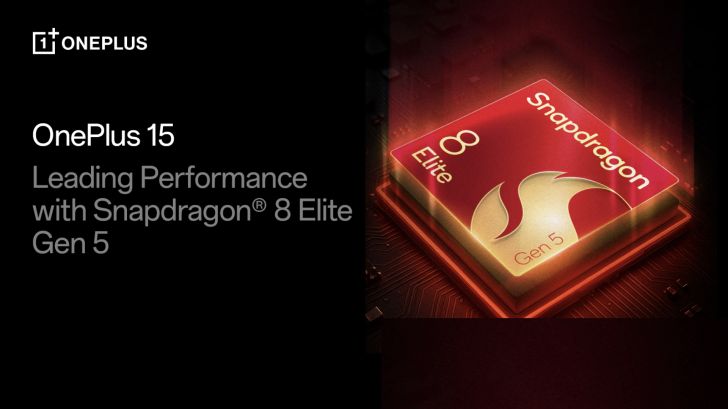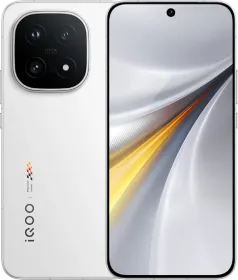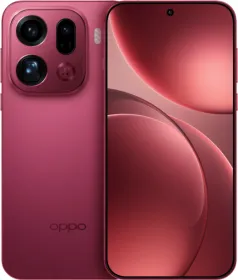Choosing between the OnePlus 15 (review) and the OnePlus 13 (review) isn’t as easy as it might sound. OnePlus has taken a different approach this year, focusing on battery life, gaming performance, and durability, while making unexpected compromises in areas where the OnePlus 13 still shines. Both phones run the same OxygenOS 16 software, deliver flagship-level speed, and target users who want a no-nonsense flagship Android experience.
But with price differences narrowing and hardware priorities shifting, the question becomes: what has actually changed in one year, and which phones deliver better value today? This comparison breaks down the differences across design, display, performance, software, cameras, battery life, and pricing, to help you decide whether the OnePlus 15 is worth the upgrade, or the OnePlus 13 remains the smarter buy in 2025.
OnePlus 15 vs. OnePlus 13: Table of Contents
OnePlus 15 vs. OnePlus 13: Design

| OnePlus 15 | OnePlus 13 | |
| Dimensions | 161.4 x 76.7 x 8.1 mm | 162.9 x 76.5 x 8.5 mm or 8.9 mm |
| Weight | 211 or 215 grams | 210 or 213 grams |
| Material | glass / aluminum / glass | glass / aluminum / glass |
| IP Rating | IP68/IP69K (2m for 30 min) | IP68/IP69 (1.5m for 30 min) |
| Colors | Infinite Black, Ultra Violet, Sand Storm | Black Eclipse, Arctic Dawn, Midnight Ocean |
Both phones feature a punch-hole screen in the front, with symmetrical bezels and rounded edges on all sides. However, instead of the round camera module on the OnePlus 13, the OnePlus 15 uses a square-shaped module with curved edges. While the placement of the camera and the flash units remains the same, the presentation is different.
The OnePlus 15 features a body-colored camera module with blacked-out openings for the camera sensors, which looks different from that on its predecessor. Other than that, the new phone is slimmer, features Gorilla Glass Victus 2 front, and has a superior IP rating, including IP69K certification.
For those catching up, IP69K is a more stringent version of the IP69 test, which tests the device for use in even harsher industrial settings or on electrically powered road vehicles. Moreover, the OnePlus 15 is more durable than its predecessor.
OnePlus 15 vs. OnePlus 13: Display


| OnePlus 15 | OnePlus 13 | |
| Display Size | 6.78-inch | 6.82-inch |
| Technology | LTPO AMOLED | LTPO 4.1 AMOLED |
| Resolution | 2772 x 1272 pixels; 450 ppi | 3168 x 1440 pixels; 510 ppi |
| Refresh Rate | 165Hz | 120Hz |
| Peak Brightness | 1800 nits (HBM) | 1600 nits (HBM) |
| Dimming | 2160Hz PWM dimming | 2160Hz PWM dimming |
- Between the two phones, the OnePlus 13 has the bigger and sharper screen.
- Despite being smaller than its predecessor, the OnePlus 15’s screen has fewer pixels (450 ppi vs. 510 ppi). For those familiar with the term, newer phones offer 1.5K resolution, while older ones offer 2K resolution. This should be evident if you’re reading or editing pictures on the device.
- However, on the positive side, the phone supports an adaptive refresh rate of up to 165Hz (up from 120Hz), and a higher HBM brightness (1800 nits vs. 1600 nits). However, the panel only goes to 165Hz in certain video games.
- The PWM dimming rate remains the same for both phones, though.
- Both phones also support Dolby Vision and HDR10+, so streaming shouldn’t be a problem on either.
The OnePlus 15 compromises on resolution for a higher refresh rate, but the screen is equally good for day-to-day use. Furthermore, it is slightly brighter than the predecessor.
Also Read: realme GT 8 Pro vs. OnePlus 15 vs. iQOO 15: Camera Comparison
OnePlus 15 vs. OnePlus 13: Chipset

| OnePlus 15 | OnePlus 13 | |
| Chipset | Snapdragon 8 Elite Gen 5 | Snapdragon 8 Elite |
| Manufacturing Process | TSMC’s N3P 3nm | TSMC’s N3E 3nm |
| Core Configuration | 8 cores: 2 4.60 GHz prime cores + six 3.62 GHz performance cores | 8 cores: 2 4.32 GHz prime cores + six 3.53 GHz performance cores |
| GPU | Adreno 840 | Adreno 830 |
| NPU / AI Processing | Qualcomm Hexagon NPU for over 30% faster AI performance | Qualcomm Hexagon NPU for over 45% faster AI performance over the prior gen |
| Memory / Storage | LPDDR5X Ultra/Ultra+ & UFS 4.1 | LPDDR5X + UFS 4.0 |
| Connectivity | Wi-Fi 7, Bluetooth v6.0 | Wi-Fi 7, Bluetooth v5.4 |
Under the hood, the OnePlus 15 features the Snapdragon 8 Elite Gen 5 chipset, which offers higher clock speeds, a better GPU, and a faster NPU than the Snapdragon 8 Elite on the OnePlus 13.
In everyday usage, the OnePlus 15 should feel a bit snappier, especially in CPU-bound tasks, such as playing video games (at higher frames), editing photos or videos, or switching between multiple apps (and maintaining the apps in the background).
In our test, the device scored 3,747,971 points on the AnTuTu v11.0.4 benchmark, an excellent result. Remember, this score isn’t directly comparable to the OnePlus 13’s AnTuTu v10 score, as the benchmarking platform has recently recalibrated its scoring system.

When it comes to gaming, the OnePlus 15 provides an even better experience by supporting a 165 FPS refresh rate for six titles, including Clash of Clans, Brawl Stars, Real Racing 3, Standoff 2, Blood Strike, and COD Mobile. As noted in our review of the device, the frame rates remain stable, even after 45 minutes of gaming, and the temperature does not rise too much.
Also Read: realme GT 8 Pro vs. iQOO 15: Two Snapdragon 8 Elite Powerhouses, But One Edges Ahead in Practicality
What’s interesting is that OnePlus has achieved better thermal performance despite the latest flagship featuring a smaller vapor chamber (5,731 mm-square vs. 9,925 mm-square). However, this doesn’t mean that the OnePlus 13 is outdated or doesn’t perform well under sustained load.
In fact, if you aren’t hunting for the latest specifications, you can get a OnePlus 13 at a discounted price and still use the phone for a good two to three years without facing any major performance-related issues.
OnePlus 15 vs. OnePlus 13: Operating System

Unlike other manufacturers, which often reserve new software features for their latest smartphones, OnePlus provides a streamlined experience across all supported devices. This is also true for the OnePlus 15 and the OnePlus 13.
In our review of the OnePlus 15, we mentioned that the smartphone runs OxygenOS 16 based on Android 16, offering several useful AI-based features. For instance, you can use the new Plus key or the three-finger swipe to capture anything on the screen, ask Gemini AI to go through your saved content, and use features like AI Recorder, AI Portrait Glow, AI Scan, and AI PlayLab.

There’s a new feature called Motion Cues that helps reduce motion sickness while travelling in a car. All these features should also be available for the OnePlus 13, as the smartphone has already received the OxygenOS 16 update.
Furthermore, OnePlus has promised to provide four years of operating system updates and six years of security updates with the smartphone, which is still behind what high-end Samsung phones (seven years of OS and security) or the latest iQOO 15 offer (five years of OS, seven years of security).
However, when viewed in isolation, the software support duration is pretty good.
OnePlus 15 vs. OnePlus 13: Camera

| OnePlus 15 | OnePlus 13 | |
| Primary Camera | 50MP (f/1.8, 1/1.56″, OIS) | 50MP (f/1.6, 1/1.43″, OIS) |
| Max Video Resolution & Frame Rate | 8K@30fps, 4K@120fps | 8K@30fps, 4K60fps |
| Maximum Resolution | 120x | 120x |
| Zoom Camera | 50MP (f/2.8, 1/2.76″, OIS) for 3.5x optical zoom | 50MP (f/2.6, 1/1.95″, 3x optical zoom) |
| Ultrawide Camera | 50MP (f/2.0, 1/2.88″, PDAF, 116°) | 50MP (f/2.0, 1/2.75″, 120°) |
| Front Camera | 32MP (f/2.4, 1/2.74″, AF) | 32MP (f/2.4, 1/2.74″) |
| Max Video Resolution & Frame Rate | 4K@60fps | 4K@60fps |
The cameras on the OnePlus 15 aren’t as good as those on the OnePlus 13. Whether it is the primary, telephoto, or ultrawide sensor, all of them are physically smaller than those on the OnePlus 13.
While the DetailMax Engine helps retain details in pictures (by shooting at 26MP), the lack of larger sensors shows up when capturing images in low light or at higher zoom levels. Hence, it would be safe to say that the OnePlus 13 should capture better pictures, at least in the tricky scenarios.
There are two noteworthy improvements as well. First, the primary camera can now record 4K video in up to 120 fps, resulting in super-detailed slow-motion videos. Second, the front camera now has autofocus, helping maintain sharpness in photos.

Additional features include switching between the front and rear cameras during 4K 60 fps video, portrait video at 4K 30 fps, Pro Video with O-Log support, and LUT previews.
So, while the OnePlus 15 uses smaller sensors than the OnePlus 13, it compensates with the DetailMax Engine’s processing and improved video capabilities. Check out our detailed OnePlus 15 camera review to understand the camera’s performance in depth.
Also Read: vivo X300 vs. vivo X200: What’s Changed? Everything.
OnePlus 15 vs. OnePlus 13: Battery

| OnePlus 15 | OnePlus 13 | |
| Battery Capacity | 7,300 mAh Si/C | 6,000 mAh Si/C |
| Wired Charging Speed | 120W UFCS, 55W PPS, 36W PD | 100W PD |
| Wireless Charging Speed | 50W | 50W |
The OnePlus 15, with its significantly larger battery, offers around 11-12 hours of screen-on time with mixed usage and even more with lighter usage. Now, it depends on whether you want to extract the entire juice in one day or split the usage over two days. The 120W SuperVOOC charger (provided in the box) charges the phone from 0% to 100% in about 45 minutes.
The OnePlus 13, in our testing, provided around eight hours of screen-on time and charged up to 100% in around 35 minutes. So, as far as battery life is concerned, the OnePlus 15 levels up, big time.
OnePlus 15 vs. OnePlus 13: Connectivity

| OnePlus 15 | OnePlus 13 | |
| Supported 5G Networks | Sub-6 GHz | Sub-6 GHz |
| Wi-Fi | Wi-Fi 7 | Wi-Fi 7 |
| Bluetooth | Bluetooth v6.0 | Bluetooth v5.4 |
| GPS | GPS (L1 + L5) | GPS (L1 + L5) |
| NFC | Yes | Yes |
| IR Blaster | Yes | Yes |
| USB | USB Type-C 3.2 | USB Type-C 3.2 |
In terms of connectivity, there aren’t any major differences between the OnePlus 15 and the OnePlus 13, except that the former features Bluetooth v6.0.
Also Read: iPhone 17 Pro vs. vivo X300 Pro vs. OPPO Find X9 Pro: Leaks Reveal the Ultimate Camera Showdown
OnePlus 15 vs. OnePlus 13: Price & Verdict
OnePlus 15 Price

To answer the Rs. 72,999 vs. Rs. 79,999 question, a lot has changed in the OnePlus 15 compared to the OnePlus 13. First, the phone includes a new, more powerful chipset, along with faster memory and storage. Then there are design refinements, wherein the OnePlus 15 looks different and is more durable on paper. Then there’s the bigger battery leap, Bluetooth upgrade, and improved video capabilities. Finally, the screen also offers a 165Hz refresh rate.
You should consider the OnePlus 15 for the massive battery upgrade, better sustained performance, more durable build, a smoother gaming experience, and improved video capture.
OnePlus 13 Price

- OnePlus 13 (12GB + 256GB): Rs. 65,999
- OnePlus 13 (16GB + 512GB): Rs. 72,999
- OnePlus 13 (24GB + 1TB): Rs. 83,999
The OnePlus 13 is equipped with a flagship-level chipset that continues to deliver excellent performance in 2025. Furthermore, the camera hardware gives it an edge in zoom and low-light compared to the newer model. The phone also has a higher-resolution display and will still receive the latest OxygenOS updates for a couple of years.
Among the reasons to consider the higher price-to-value proposition are better imaging hardware and a sharper display. Even otherwise, the phone performs well in battery life, display, and connectivity. If you could get the OnePlus 13 base model for under Rs. 60,000, that would be a steal of a deal.

You can follow Smartprix on Twitter, Facebook, Instagram, and Google News. Visit smartprix.com for the latest tech and auto news, reviews, and guides.

































